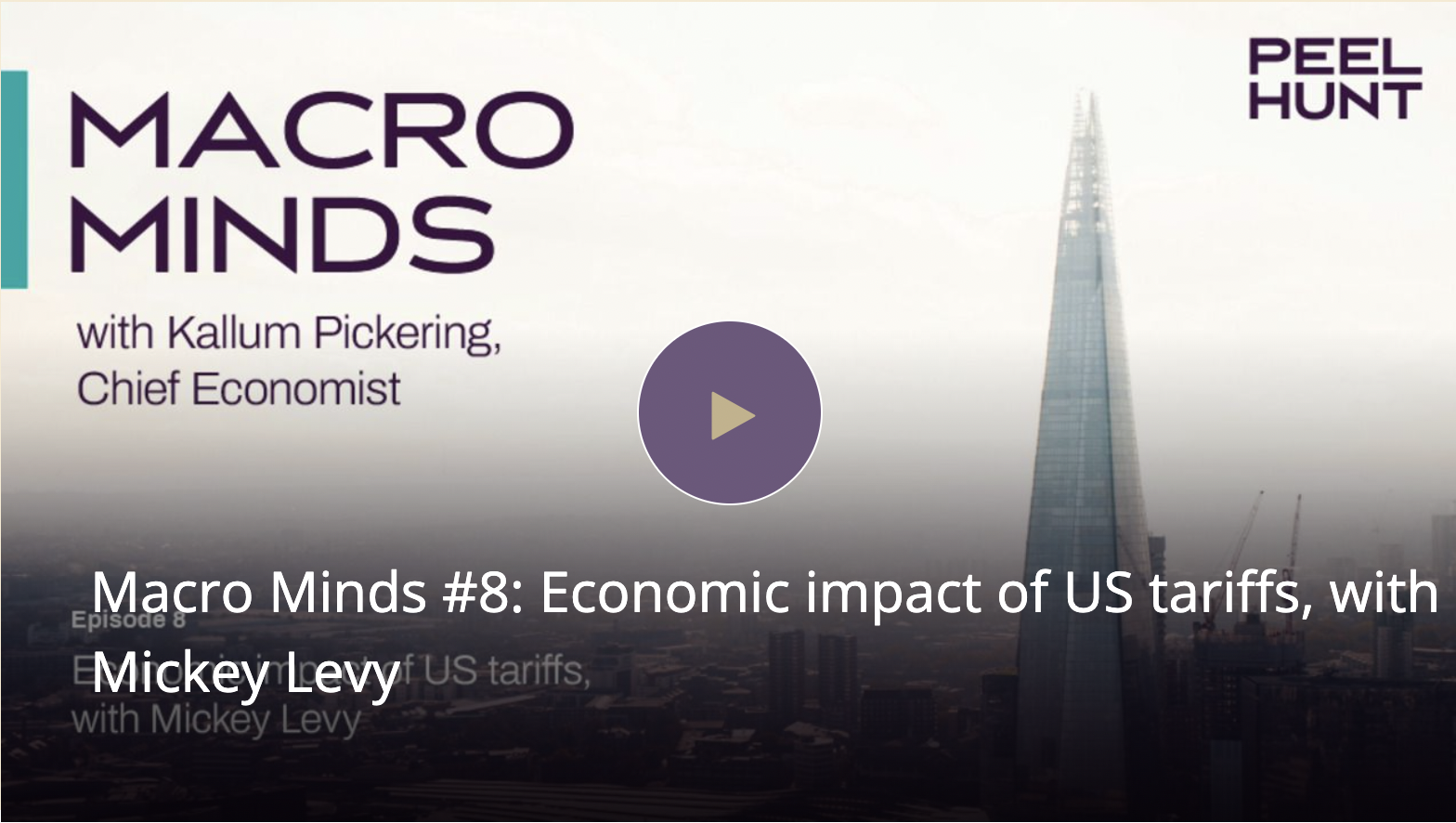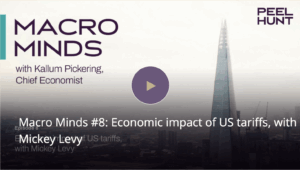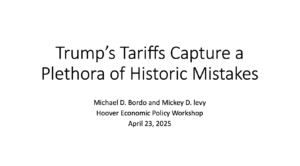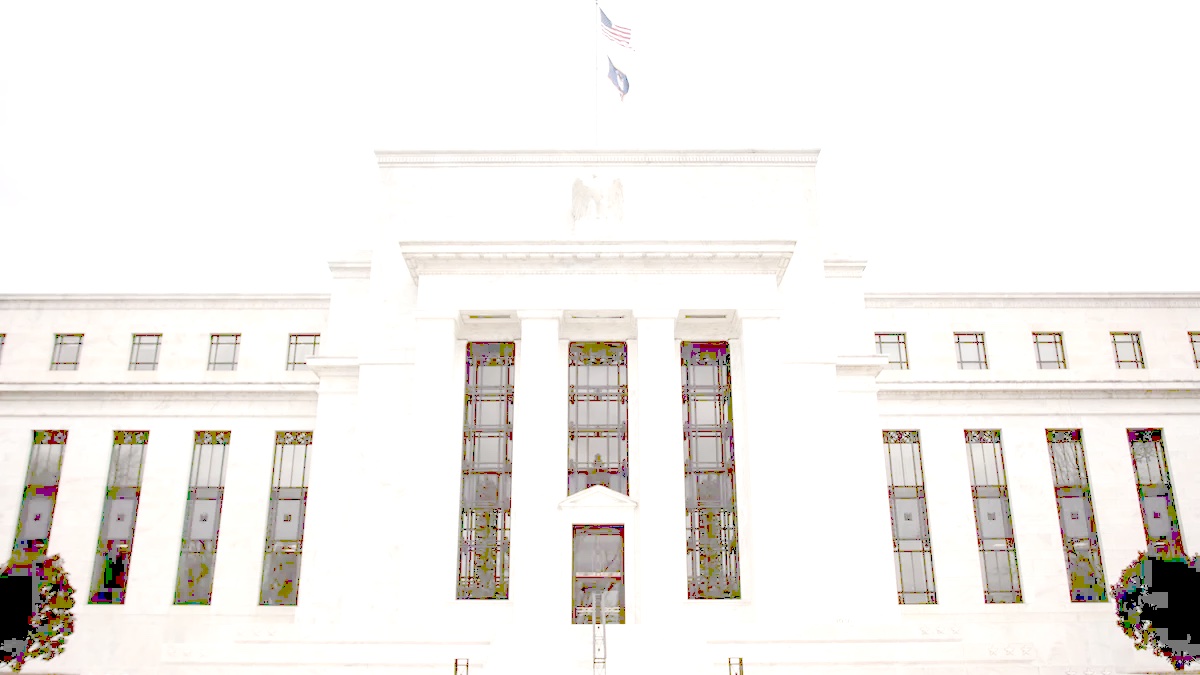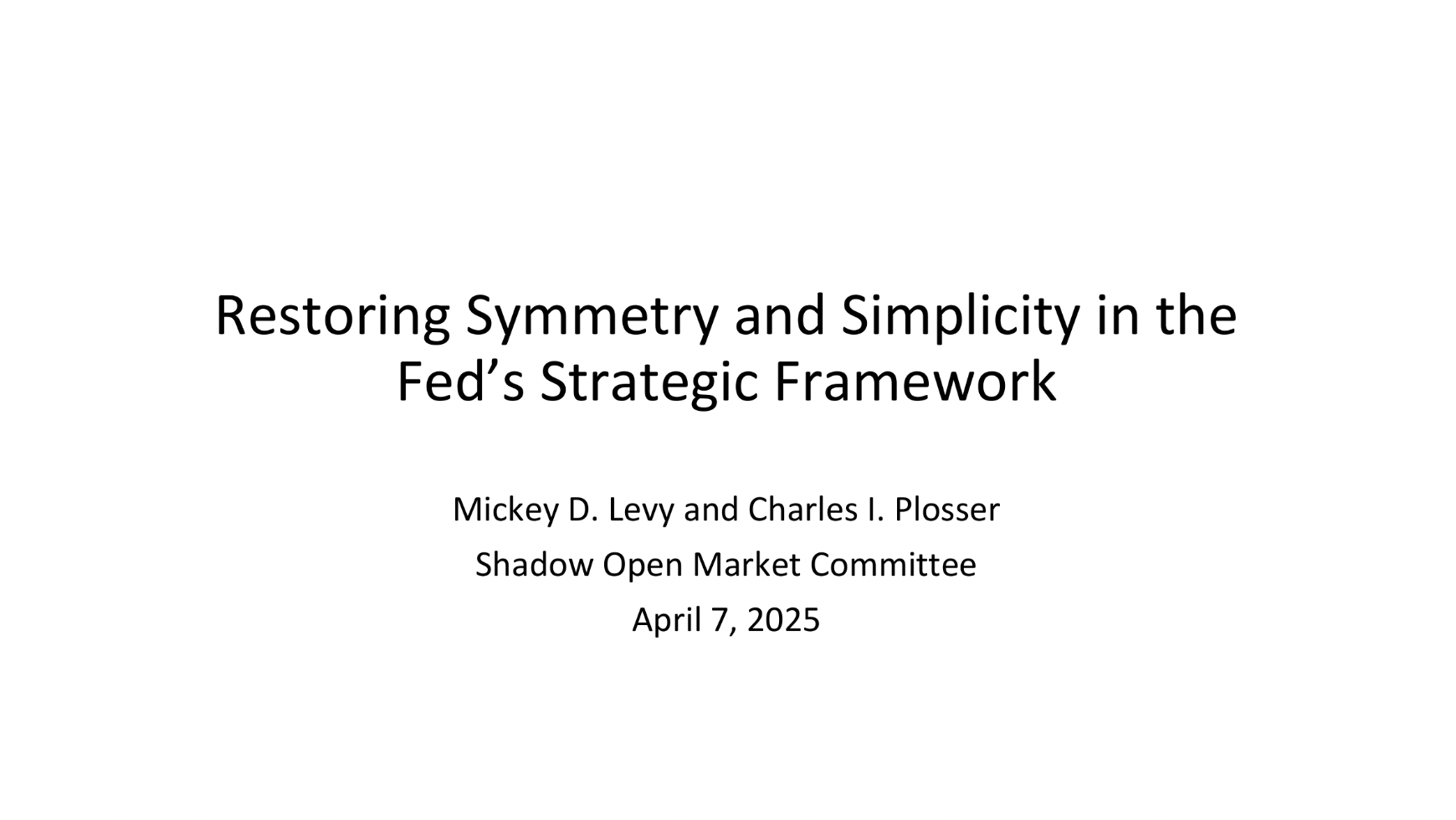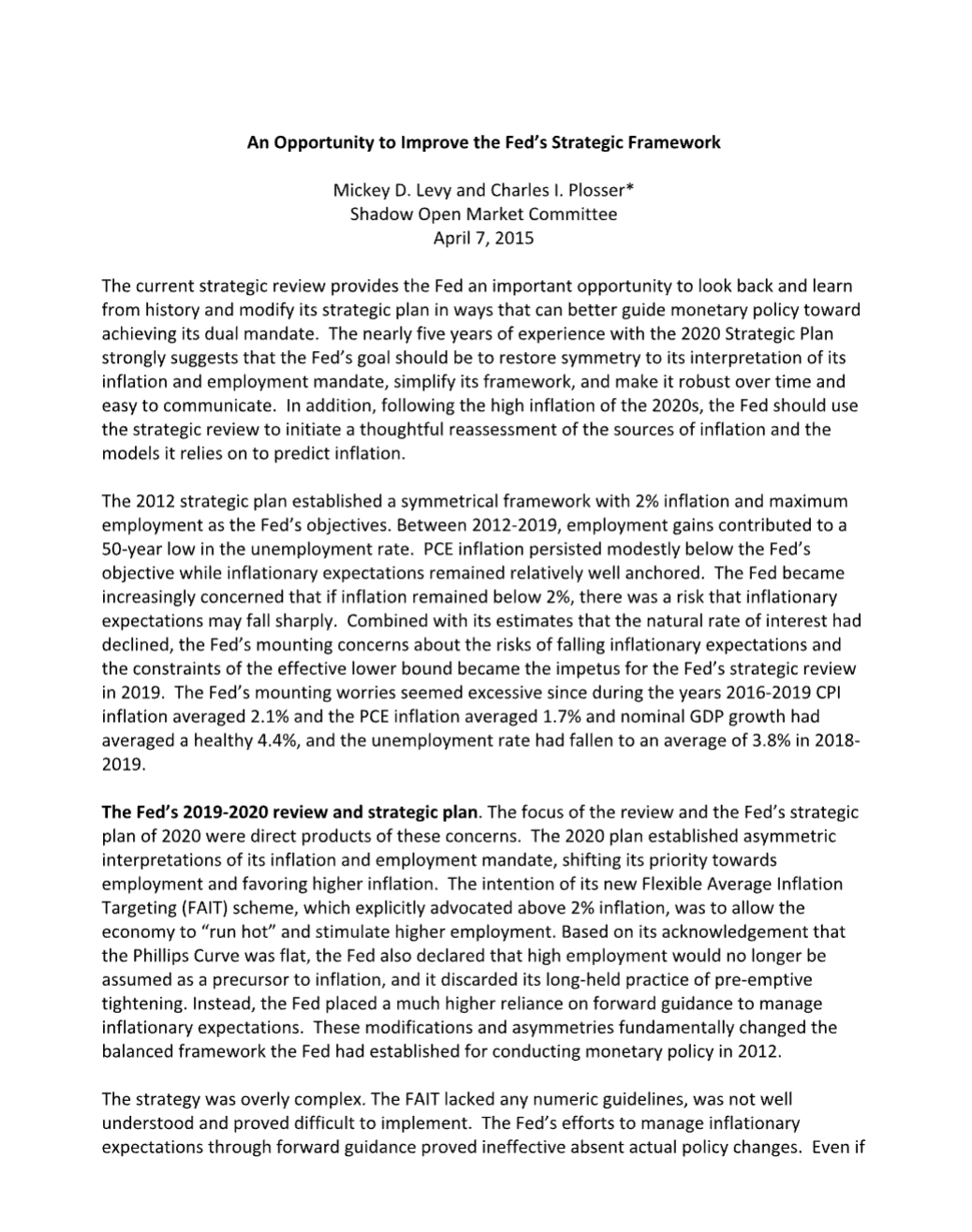Macro Minds With Kallum Pickering
Here's an interview on the Podcast "Macro Minds," hosted by Kallum Pickering, Chief Economist of PeelHunt, a leading UK investment bank.
We discuss the impact of tariffs from a global perspective, and related topics like how the tariffs will impact global trade and how countries have varying degrees of flexibility to negotiate with President Trump. We also review current economic conditions in the U.S., how the Fed may respond and the implications for financial markets, and in light of Trump's erratic behavior, we consider how different scenarios may unfold.
Trump’s Tariffs Capture a Plethora of Historic Mistakes
Here's a presentation on tariffs I made with my colleague Michael Bordo at a Hoover Institution Economic Policy Workshop. Mike describes how Trump's tariffs policy ignores the important lessons of history that tariffs are costly mistakes. In the second half of the presentation, I describe the likely adverse impacts of tariffs on the economy, financial markets and the Fed, with a focus on the potential high costs of a loss of U.S. government credibility and reliability. I conclude with a scenario analysis of Trump's tariff policies and speculate on probable outcomes.
An Opportunity to Improve the Fed’s Strategic Framework
Yesterday, the Shadow Open Market Committee’s meeting in Washington, D.C. addressed issues of how the Fed may improve its policy framework.
Here are a paper and presentation I prepared on the issues with Charles Plosser, former President of the Federal Reserve Bank of Philadelphia. We describe how the asymmetries of the 2020 strategic plan, particularly its FAIT scheme and dropping of preemptive monetary tightening, was driven by the Fed’s excessive fears of too-low inflation and the Effective Lower Bound.
We recommend restoring symmetry to the strategic framework, in part by re-establishing a clear symmetrical 2% inflation target, and encourage the Fed to consider systematic rules as an input to its discretionary conduct of monetary policy. We recommend many changes to the quarterly SEPs: its infamous dot plot should include a Taylor Rule estimate (dot) of the appropriate interest rate that would achieve the median FOMC economic and inflation projections; information about the Fed’s balance sheet; and an annual scenario analysis exercise with alternative projections. In contrast, I’m sure the Fed’s currently ongoing strategic review will be a tame and closely controlled review.
